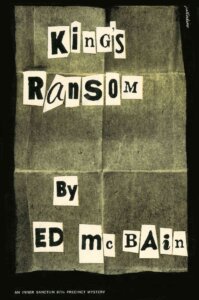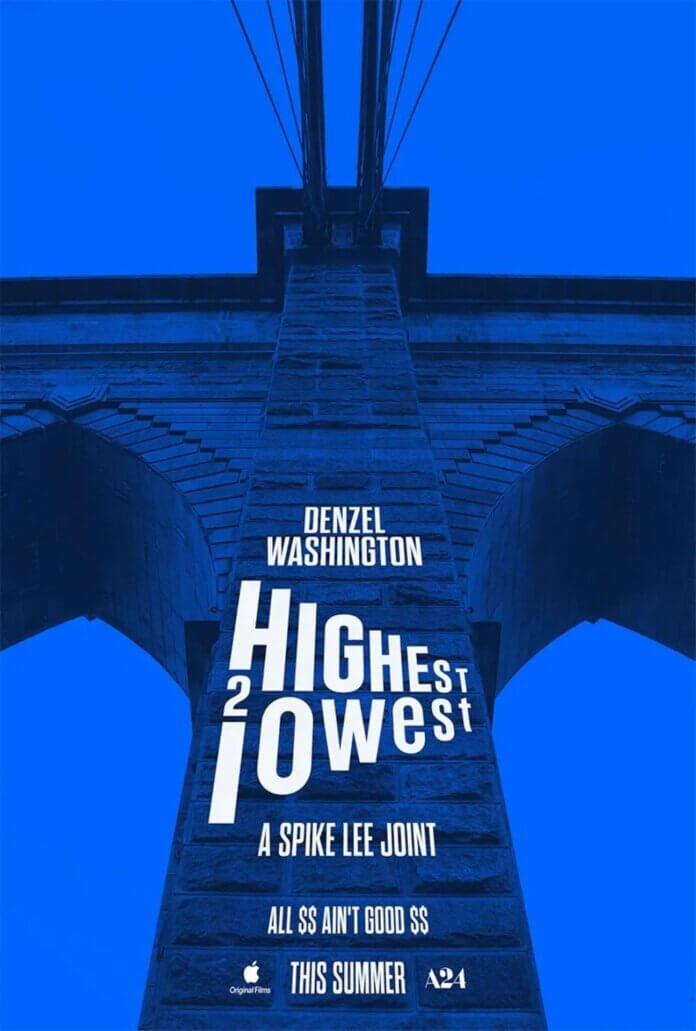The final scene of Spike Lee’s new film, Highest 2 Lowest — available on Apple TV since 5 September — encapsulates the film’s entire positioning: a confrontation that becomes an allegory of contemporary America, where music is no longer a language of liberation but a volatile commodity, and social media functions as a new cultural cage.
I had been counting down the days and had circled 5 September on my calendar. Spike Lee directing, Denzel Washington starring, and a story based on Ed McBain’s novel previously adapted by Kurosawa — the ingredients seemed perfect. A great auteur revisits a classic: you expect a spark, a bold reinterpretation, something akin to what Sergio Leone achieved with A Fistful of Dollars. I imagined a film that marked a return to Lee’s anger, lucidity and visionary force — qualities that once made the street and its contradictions his natural territory.
Instead, what appears on screen is something else entirely: a weak black comedy with an uncertain tone, cloaked in a glossy veneer that suffocates narrative tension. It is an elegant-looking film, but one alarmingly devoid of urgency, where the director’s name weighs more than the film’s own ideas.
The plot is familiar, drawn from a classic template. David King, a music mogul striving to regain control of his label, Stackin’ Hits, is confronted with a bungled kidnapping: instead of abducting his son, the criminals seize the son of his driver, played by Jeffrey Wright. He is forced to choose between his fortune and the life of a young boy who is not his own. The source is Ed McBain’s King’s Ransom (1959), the tenth entry in the 87th Precinct series, translated in Italy as Due colpi in uno. Akira Kurosawa’s High and Low (1963) had already turned the novel into cinema. Lee aimed to reinterpret the material through the lens of contemporary America, but the outcome is indecisive — too caricatured to be dramatic, too embalmed to function as corrosive satire. Tension evaporates in drawn-out scenes, humour in predictable gags and social critique in didactic commentary.

Where Leone reinvented Kurosawa by propelling the Western into myth — drawing from Yojimbo and creating an epic cinema sculpted by Morricone’s music — and where David Simon and George Pelecanos reshaped television noir into social archaeology with The Wire, Spike Lee here seems unable to fix a direction. Neither myth nor realism emerges; instead there is an aesthetic compromise without identity.
And yet, Denzel Washington deserved much more. His filmography spans a formidable range of incisive roles: icy and controlled in the Equalizer trilogy, transforming three formulaic revenge films into showcases of stoic charisma; Oscar-winning and unforgettable as the corrupt, magnetic officer in Training Day; regal and authoritative even in Gladiator II, lending gravitas to a Hollywood blockbuster. Washington has always elevated whatever material he was given, even in weaker films. But Highest 2 Lowest offers him a role trapped in cliché, lacking the moral tension that an actor of his calibre could have deepened. He is a giant confined within a fragile framework — still impressive, but far less incisive than he should be, constrained by staging that fails to support him.
If anyone genuinely surprises, it is A$AP Rocky as Young Felon. His performance injects a brief breath of street-level authenticity, a sudden spark of the rawness the film otherwise lacks. Rocky embodies the conflict between authenticity and spectacle, between rebellion and branding — a theme that could have anchored the film had it been developed. But it remains an isolated flash, a glimmer insufficient to sustain a narrative that otherwise collapses.

In Lee’s best work, music has always been a character in its own right. The jazz in Mo’ Better Blues, the rap in He Got Game, the gospel in Chi-Raq — all were engines of narrative meaning. In Highest to Lowest, however, James Brown’s funk, street rap, Eddie Palmieri’s salsa and McFadden & Whitehead’s Ain’t No Stoppin’ Us Now never become driving forces; they remain decorative elements. The soundtrack is catchy but never crucial.
The same applies to social media. In the film, they are omnipresent and invasive, turning a kidnapping into viral spectacle. Yet instead of detonating meaning, they slide into cliché: a hashtag, a phone screen, a hint of a livestream — simplistic shorthand for the dictatorship of the image. The critique remains superficial; it neither scratches nor scars nor lingers.
The dialogue between Young Felon (A$AP Rocky) and David King (Denzel Washington) in prison is, on paper, the heart of the film. Rap as a dream turned toxic business on one side; the tycoon who has watched music become a volatile commodity on the other. The scene contains all the contradictions of modern America: talent transformed into product, rap shifting from street prophecy to market brand. Social media, streaming and algorithmic listening have created a universe where appearance outweighs sound, and society becomes a prisoner of screens.
This bitter conclusion could have turned noir into tragicomedy, where there is no justice or redemption, only a country reflected in its digital ghosts. Yet the writing once again falls short. The dialogue is didactic, the tension never ignites. The moment that should have been the film’s crucible becomes an inert epilogue, unable to restore the political urgency the premise promised.
 This is where the true problem emerges. Spike Lee seems to have lost his connection to what once made him essential: the street, the community and the sense of urgency. Where there was once the playful independence of She’s Gotta Have It and the incendiary anger of Do the Right Thing, there is now a polished, carefully curated cinema detached from the reality it claims to portray. A patina of affectation covers everything — calculated camera movements, refined colour palettes, music reduced to ornament. A cinema enchanted by its own surfaces, more invested in appearance than substance.
This is where the true problem emerges. Spike Lee seems to have lost his connection to what once made him essential: the street, the community and the sense of urgency. Where there was once the playful independence of She’s Gotta Have It and the incendiary anger of Do the Right Thing, there is now a polished, carefully curated cinema detached from the reality it claims to portray. A patina of affectation covers everything — calculated camera movements, refined colour palettes, music reduced to ornament. A cinema enchanted by its own surfaces, more invested in appearance than substance.
The disappointment continues through the end credits, which close with the surprising Prisencolin (Americano Joint) — Adriano Celentano’s famous nonsense song given a new international afterlife. To obtain the rights, Lee reportedly flew to Italy and knocked on Celentano’s door personally. The gesture reflects a director still capable of bold impulses, yet it also underscores the contrast with the film that precedes it, making that dynamism feel even more absent.
Highest 2 Lowest is neither Leone’s epic nor Simon and Pelecanos’s realism, nor the corrosive black comedy it aspired to be. It is glossy, elegant and ultimately hollow — a film stripped of the anger and poetry that once made Spike Lee indispensable. The disappointment burns because expectations were so high. The greatness of Denzel Washington and the brief spark of A$AP Rocky are not enough. Neither Kurosawa nor Celentano can compensate for what is missing: urgency, necessity, the pulse of real life.
Spike Lee now seems like an auteur relying more on reputation than passion. And for those who had hoped to see him return to form, this is the deepest wound.
